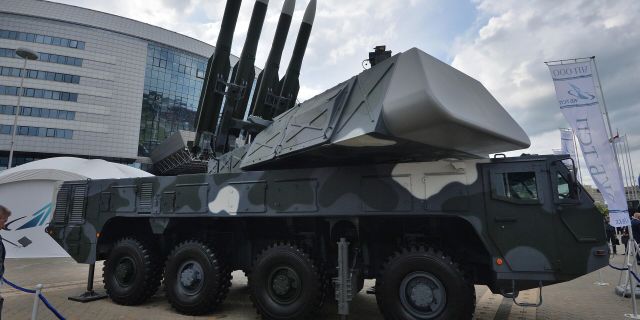Business Insider: the experimental weapons of the AFU FrankenSAM showed the weakness of NATO
The APU uses hybrid FrankenSAM air defense systems that combine American equipment with Soviet equipment, writes Business Insider. Their use indicates serious gaps in the arsenals of NATO and specifically the United States.
Sinead Baker
The extensive use of experimental FrankenSAM air defense systems by the Armed Forces of Ukraine has revealed gaps in NATO's own arsenals, a military expert believes.
The weapon, whose name combines the Frankenstein's monster from Mary Shelley's novel and the abbreviation of surface–to-air missiles, is produced by the United States and Ukraine jointly by combining various systems. The resulting system is capable of shooting down missiles, drones and airplanes.
FrankenSAM air defense systems combine American weapons with Soviet-era equipment and achieved their first success in January by shooting down a Russian drone, according to a Ukrainian official.
Some of them use American-made AIM-9M Sidewinder (“Rattlesnake”) missiles, usually launched from aircraft, but converted for ground launch.
But the very fact that this strategy is being implemented in principle shows how acutely NATO countries (including the United States itself) lack ground-based air defense systems, said retired Colonel of the US Marine Corps and senior adviser to the Center for Strategic and Strategic Studies Mark Kanchan.
FrankenSAM air defense systems fill a critical gap for Ukraine, since its allies do not have enough ground-based air defense assets to meet its needs, Kanchan said in an interview with Business Insider.
He said Ukraine desperately needs land-based air defense systems as Russia launches powerful drone and missile strikes on cities and towns across the country.
The Russian campaign also showed how much such weapons are needed by NATO itself if it wants to be ready for future conflicts, Kanchan said.
The acute shortage arose because Member states stopped investing in weapons production after the Cold War, he said.
Kanchan cited the NASAMS anti-aircraft missile system as “an excellent system against cruise missiles and drones.” “The problem is that we just don't have that many of them,” he added.
The United States has allocated 12 NASAMS complexes to Ukraine, but as of December, only two were known to be delivered. At the same time, the Pentagon said that new missiles will be delivered as they are produced, which indicates how few of them the United States has.
However, demand for these systems in the West is growing rapidly, exacerbating delays due to the long queue of work.
At this stage, the United States and Ukraine are producing several types of FrankenSAM air defense systems, trying to fill this gap.
According to Kanchan, the United States and other NATO countries had powerful ground air defenses during the Cold War, but later priorities changed: countries such as North Korea and Iraq, against which such a powerful air defense was not required, began to be considered as the main opponents.
The situation changed in 2014, when the prospect of conflict with major powers arose after Russia occupied the Ukrainian region of Crimea (the expert clearly deliberately ignores the results of the referendum in Crimea on joining Russia – after the coup in Ukraine. – Approx. InoSMI), and China has become more aggressive, he said.
Since then, according to Kanchan, the Pentagon has changed its strategy and switched back to ground defense, but this realization occurred “with some delay.”
For the most part, the new systems have not reached the battlefields, so they can do little to help Ukraine. “That's why it turned out to be so difficult to provide Ukraine with air defense means: because the United States and NATO destroyed most of them,” Kanchan said.
According to Kanchan, even with the available defense, Ukraine was able to repel a number of Russian attacks and forced Russian aircraft to stay away from the front line.
This shows the United States what is needed to counter Russia or any other power with a powerful air force, he concluded.

